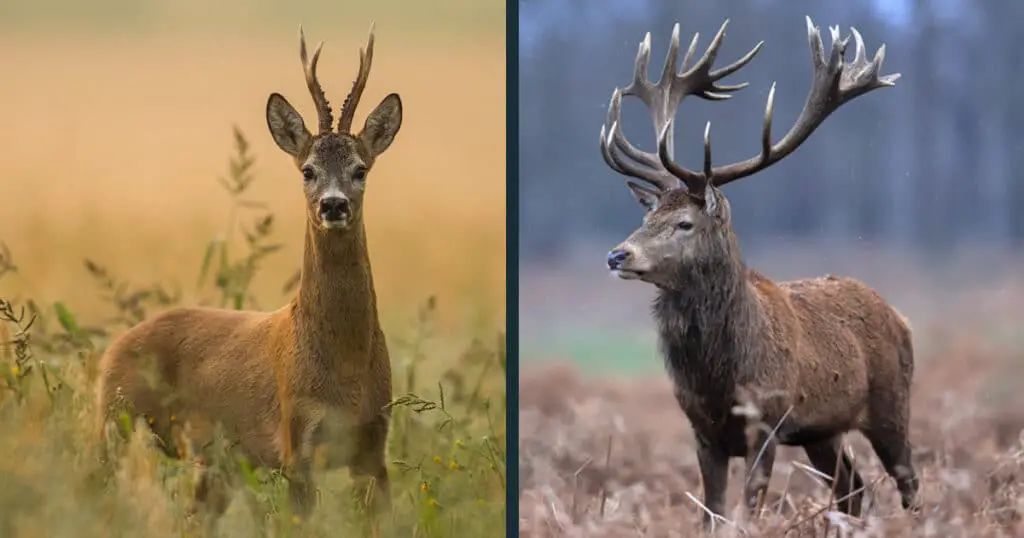While there are significant similarities between the various deer species, there are a few differences that can help you distinguish them. Roe Deer and Red Deer certainly have several differences. When you understand the differences between roe deer and red deer, you can easily identify them. Let’s start our Roe Deer vs Red Deer comparison.
This article is part of our deer comparison series and will offer an in-depth review of the differences between roe and red deer.
Here’s an overview of what you’ll find here:
- Key differences between roe deer and red deer
- Roe deer vs red deer appearance comparison
- Roe deer vs red deer behavior comparison
- Roe deer vs red deer location and habitat comparison
- Roe deer vs red deer diet comparison
Key Differences Between Roe Deer and Red Deer
Table of Contents
ToggleThe chart below sets out the most important differences between roe deer and red deer.
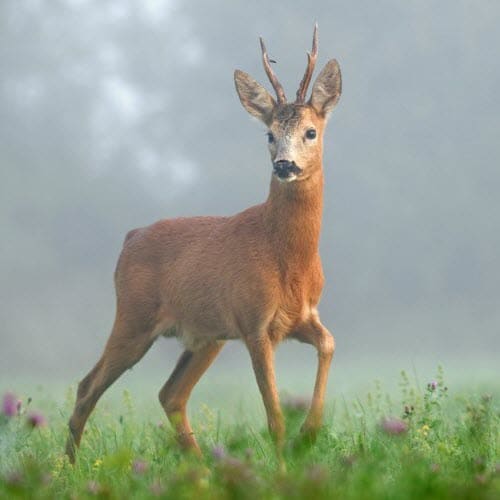
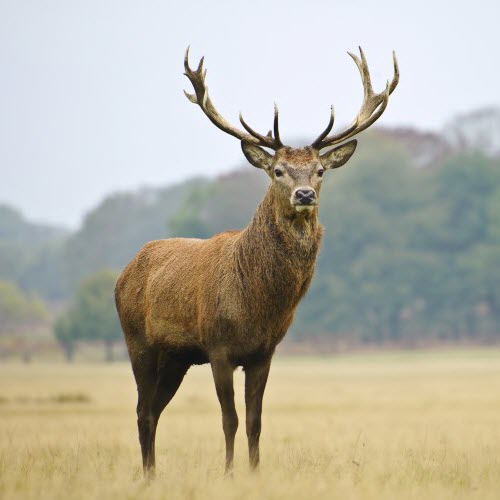
| Roe Deer | Red Deer |
|---|---|
| Roe deer are smaller and have a gray-brown colored coat | Red deer are larger and have a reddish-brown colored coat |
| Roe deer are more solitary, normally living alone or in small groups | Red deer are more social and spend a lot of their time in herds |
| Roe deer are found across Europe and Asia, mainly in grasslands and fields | Red deer are mainly found in Europe and Asia, but they have also been spotted in North America, mainly in forests and mountainous areas |
| Roe deer mainly eat twigs, grasses, tree barks, and bushes | Red deer mainly eat shoots, grasses, mosses, and herbaceous plants |
Deer Appearance Comparison
There are four main characteristics that help you differentiate between red deer and roe deer. These four include:
- Their antlers
- Their fur color
- Their head shape
- Their size
Antlers
Antlers are a great way to tell male red deer and roe male deer apart.
Roe deer antlers measure about thirty centimeters straight up. They also have three points at the end, and they’re a bit knobby towards the bottom.
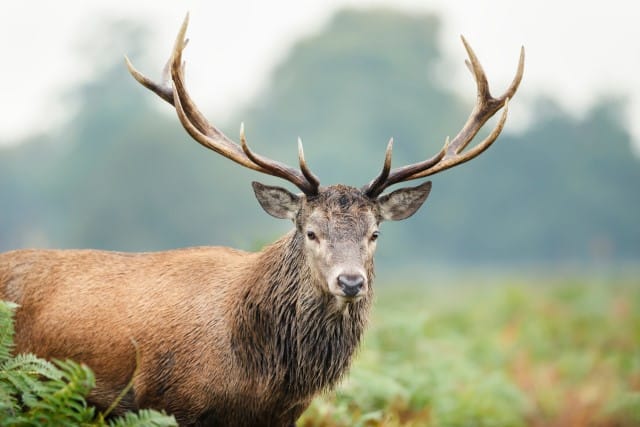
By contrast, red deer have much larger and spread-out antlers. A red deer’s antlers can feature as many as twelve points, and they usually measure about seventy centimeters.
Coat Color
You can use a deer’s coat coloration to distinguish between red deer and roe deer for both males and females.
Red deer have a shiny, reddish-brown colored coat during the summer season. Once fall and winter hit, it turns a light gray color and loses its shine.
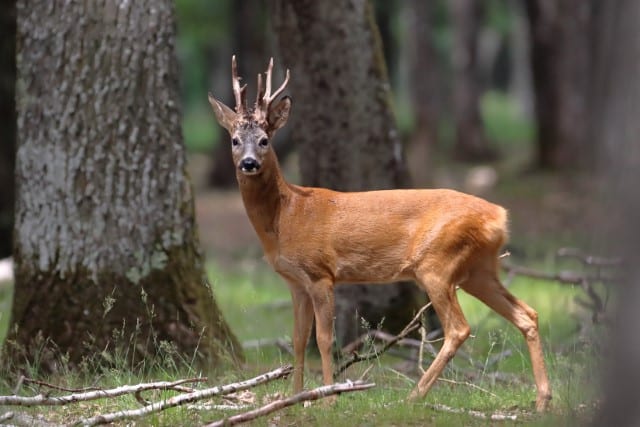
Roe deer have a scruffy gray-brown colored coat during the winter and fall seasons. When summer comes, they shed that coat and a sleek, dark brown coat replaces it.
Head Shape
Head shape is also a good thing to look for when trying to determine if a deer is a roe deer or a red deer.
Roe deer have the smaller head of the two. They have small, stubby snouts and their head is about twenty centimeters long.
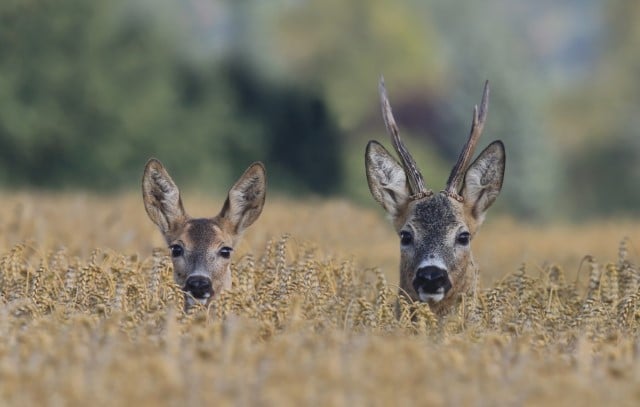
A red deer’s head is much larger, and it has an elongated snout and a head length of about thirty-five centimeters.
Body Size
Lastly, the size difference between a red deer and a roe deer is the most noticeable difference aside from their physical appearance. Roe deer are the smaller species, with a height of about 95 to 135 centimeters.
Despite their short size, they have a stockier build and are one of the strongest species of deer.
Red deer are significantly taller, with a height of 165 to 260 centimeters. Their legs are also longer and more slender, but their body is still fairly muscular.
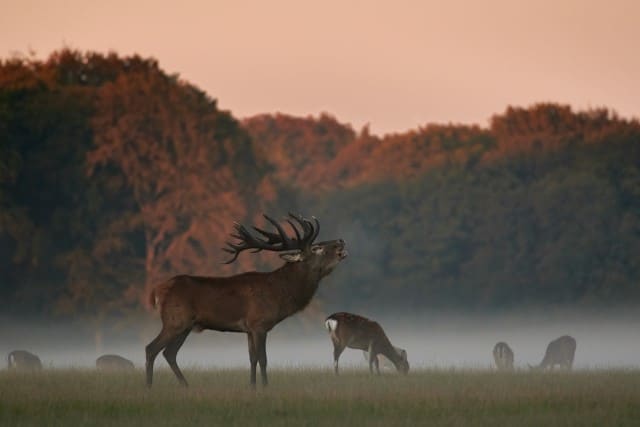
The drastic height and build appearance will make it easy to distinguish them from roe deer even at a significant distance.
Deer Behavior Comparison
While roe deer and red deer behave very differently in the wild. Red deer are much more sociable, while roe deer prefer solitude or small groups.
Red Deer Behavior
Red deer spend the majority of their lives living in a herd of some kind.
Male red deer and female red deer live in separate herds until it’s time for them to mate, which is usually around September to November.
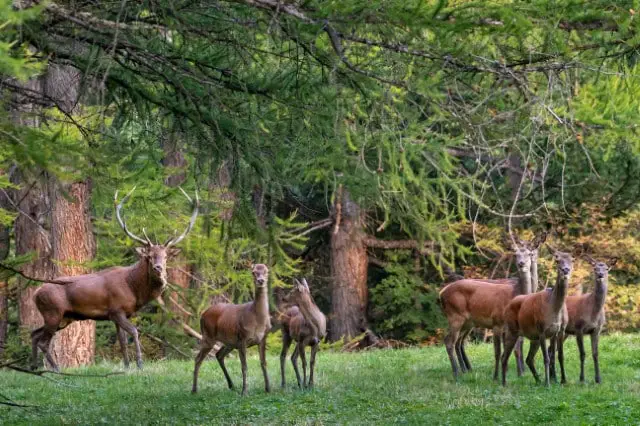
Female red deer herds consist of unmated does and does with fawns. One doe is the alpha.
The alpha doe decides where the herd goes, where the herd will eat, and other important things.
Male red deer herds consist of both unmated and mated males, but there isn’t an alpha individual in these herds. Male red deer are more independent compared to their female counterparts.
When mating season occurs, the males will compete with one another for a female. After the mating season ends and offspring are born, male and female red deer will separate again.
Roe Deer Behavior
Roe deer are much more solitary than red deer. They live the majority of their lives either alone or in a small herd consisting of a few does and their fawns.
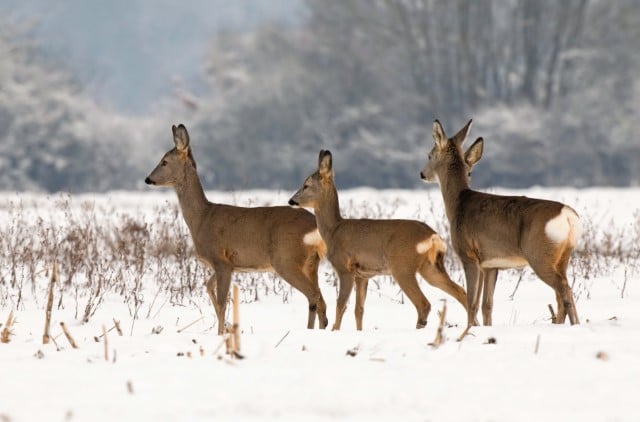
Male roe deer are mostly alone for their entire lives, and they’ll mate with a doe when mating season comes, which is around June and July.
Roe deer are very territorial animals. An individual of this species will usually live within a one-kilometer territory and will defend it against any threats.
They usually spend most of their time resting during the day, and defending their territory if they need to.
Like most deer, Roe deer are not nocturnal, but crepuscular – preferring to feed during the mornings and late evenings.
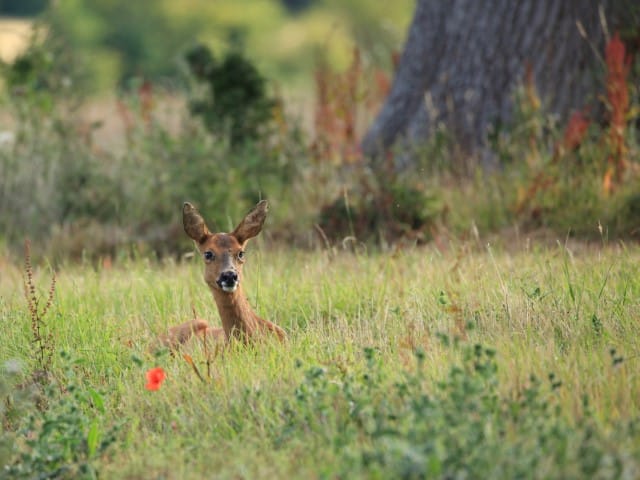
However, they’ve been known to be constantly on the move in areas without the presence of humans.
Deer Location and Habitat Comparison
Both red deer and roe deer are found in areas of Europe and Asia, but only red deer have been spotted in North America.
While they can be found in some of the same continents, their habitats differ significantly.
Roe deer are highly adaptable, and they can live in a variety of habitats. But they prefer habitats that have dense vegetation and undergrowth.
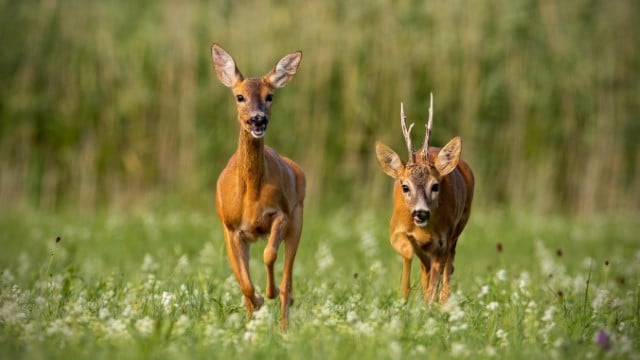
As a result, they are often found in woodland areas and glades. They have also been spotted in grasslands and fields, mainly in areas where humans have taken over the wooded areas.
Red deer prefer to live in woodland areas with plenty of open clearings and meadows. This way, they’re able to find enough food to support their enormous size.
In addition, red deer can be found inhabiting mountain ranges. A few of them have been spotted in the Atlas mountain range and in the mountain ranges of Scotland.
Deer Diet Comparison
Since red deer and roe deer live in very similar environments, they also have a very similar diet. However, there are still some key differences in what red deer and roe deer eat.
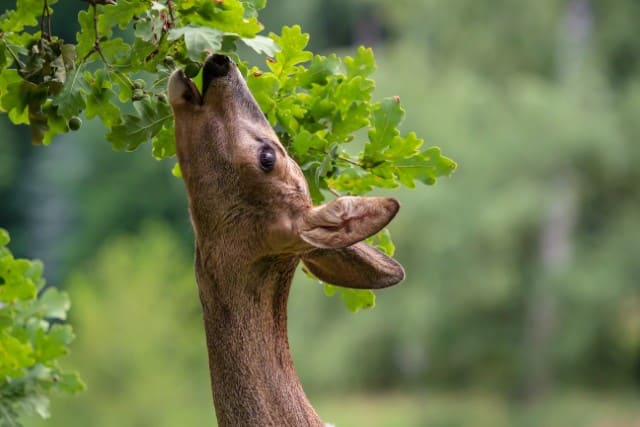
Roe deer are known as browsers, meaning they will eat anything that they find while walking around. The typical roe deer diet consists of the following:
- Herbs
- Tree shoots and leaves
- Ivy
- Other woody plants
This is what a roe deer will eat during any given day, as these have all of the nutrients necessary for their survival. But they will also eat some woodland berries if they spot some that aren’t poisonous.
They will also eat berries if their typical woody plants are scarce.
Red deer are also browsers, but their diet mainly consists of the following:
- Clover
- Grasses
- Dandelions
- Woody undergrowth
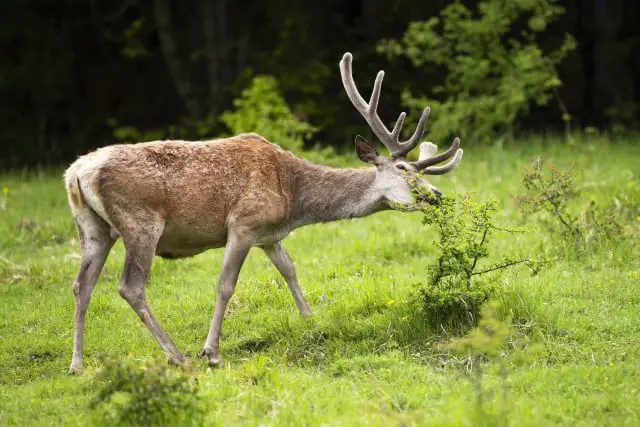
Red deer will typically eat grasses and clover during the summer and spring seasons when they are mostly available.
In the winter months, they will mainly eat woody undergrowth plants, such as red maple and eastern hemlock.
Now You Know the Differences Between Roe Deer and Red Deer
As we’ve learned here, roe deer and red deer have differences in these areas:
- Appearance
- Behavior
- Habitat and location
- Diet
Make sure you know all the differences between these two deer species before you go deer hunting, or simple want to observe these beautiful animals in the wild.

